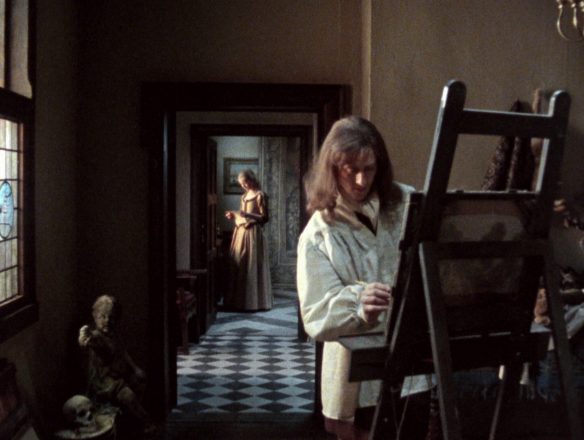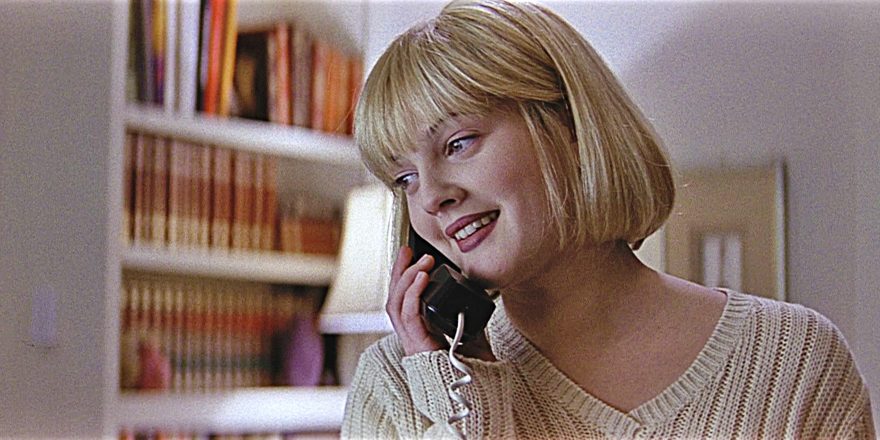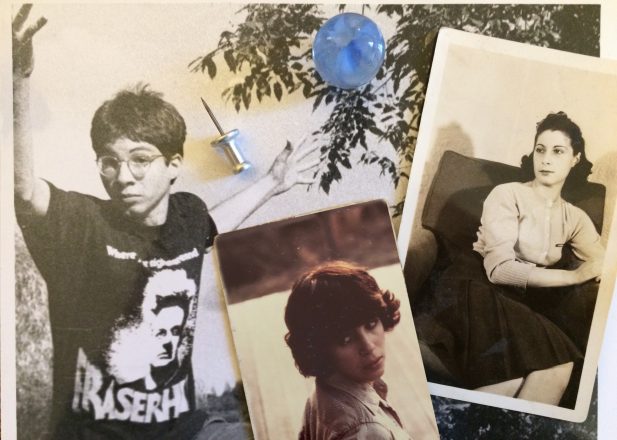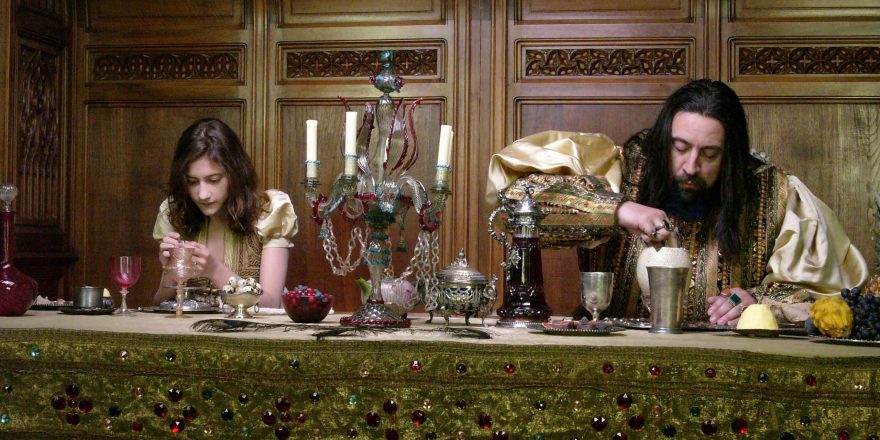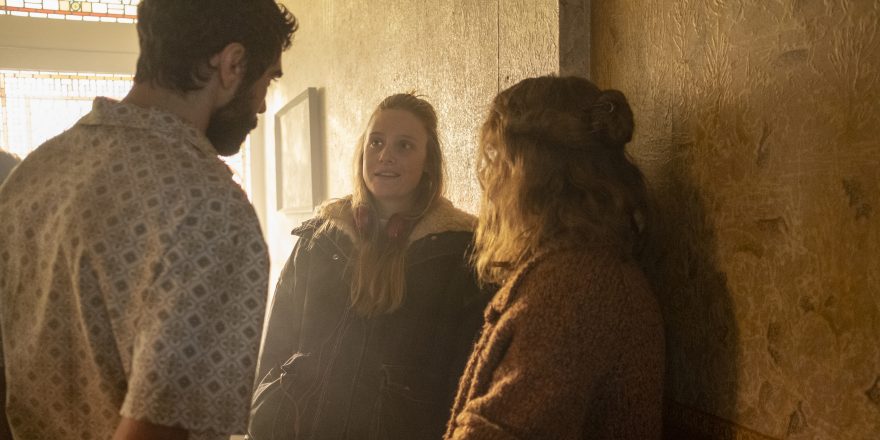Most art disappears into the margins, unmentioned in history books, forgotten except perhaps by devoted scholars and connoisseurs of a particular genre or era. There are many reasons for this, aside from the quality of the work: Perhaps it was never given adequate publicity, perhaps it was produced in the wrong time and place to garner attention, or was for some reason hidden from easy view. Yet might that obscurity sometimes be an aesthetic strength, rather than a hindrance? Might an unknown work, by an unknown artist, impress upon the viewer with the force of itself instead of its reputation? Might there be more to see in the darkness than in the light?
Leslie Megahey’s Schalcken the Painter is a 68-minute made-for-TV horror film, produced and broadcast by the BBC on December 23, 1979. It tells the ostensibly true story of the once-renowned 17th-century Dutch painter Godfried Schalcken and the eerie circumstances that led to the creation of one of his paintings. Before our eyes, a series of Schalcken’s paintings float by. A dry narrator tells us briefly about the life and style of this painter, then zeroes in on one mysterious painting that he made – that of a smiling woman holding a candle in a darkened chamber, a bed to one side with the hand of a strange figure that seems to be made of mist, and in the background a man who appears to be drawing a sword from its scabbard.
The story we are told revolves around the young Schalcken, his master Gerrit Dou, Dou’s niece Rose (whom Schalcken loves), and a strange grey-faced man named Vanderhausen, who offers an immense sum of money for Rose’s hand in marriage – a proposal that is, regretfully for all, accepted. Throughout Schalcken the Painter, the viewer feels they know where it is going; that this is a scenario, both awful and somehow supernatural, which has been spelled out from the beginning. The film does not focus on creating surprise, but instead steadily leads the viewer into a shadowy, unnerving space, and by the end to a realization about evils more real than supernatural.
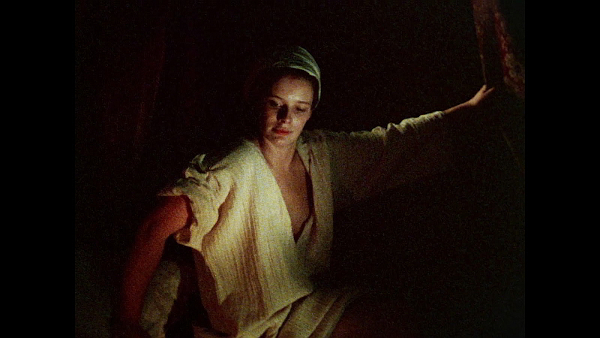
Megahey’s 16 mm film is shot in murky browns, deep blacks and rich colors; it truly looks more like it was rendered in oils instead of celluloid. A yellow cast envelopes the image, as if aged by time. Every frame is composed to look like a classical Dutch painting or a fragment of one; at times the camera is locked down on a tripod, and at others it floats in handheld close-up, mimicking the experience of an eye running over a canvas. In less skilled hands, this approach could feel mannered or overwhelming. It is an immense testament to the skills of Megahey that the image is always harmonious with the story, never feeling arbitrary or disconnected from the narrative. Despite having the modest resources of a television production, it looks every bit as lush and controlled as a film such as Barry Lyndon.
Godfried Schalcken was, in fact, a real man, a painter of some renown in his day, although perhaps not much more than a footnote now. Perhaps you’ve briefly glanced in passing at his bleak Cephalus and Procris (c. 1680s), which hangs in the Metropolitan Museum of Art in New York, or seen one of his many small, candlelit paintings reproduced as an example of the early use of artificial lighting. He worked near the end of the Dutch Golden Age of painting, decades after the prime period dominated in the public imagination by Rembrandt and Vermeer. There is something remarkable about his work, though, and it has a tendency to stick in the mind after it has been viewed. It certainly made an indelible impression on the mind of Sheridan Le Fanu, the Victorian writer of Gothic horrors and mysteries who first published his short story “Schalken the Painter” in 1839, providing the source material for this remarkable film. Le Fanu was one of the foremost progenitors of what might be termed indirect horror – in which that which is awful or frightening about the tale is left implied, off-page, only alluded to rather than shown.
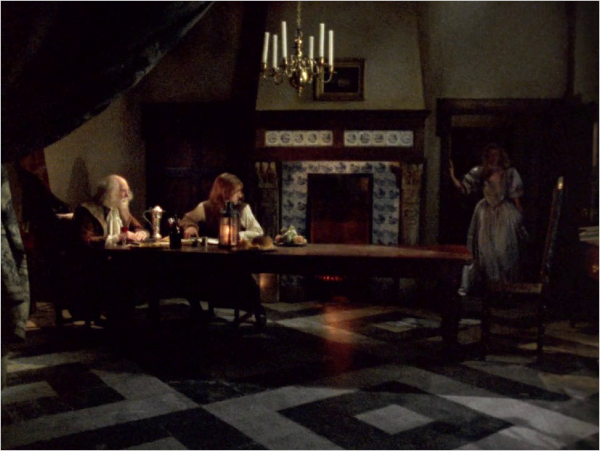
Schalcken the Painter contains within its slender running time many films: a classical ghost story, a detailed documentary on classical painting techniques, and a scathing social critique of both sexism and capitalism. Megahey stays quite close to the basic outline of Le Fanu’s tale, even using large quantities of dialogue verbatim from it, but he expands on it in several notable ways – picking up on thematic threads which are light in the story but become dominant on the screen.
The faux-documentary elements of Schalcken are more important than they might first appear, and go far beyond a mere parody of the genre. While the details of the painter’s life (and, indeed, the principal painting discussed) are fictitious, they are endowed with a sense of reality. The techniques of a Dutch painter of the period are shown with meticulous detail: live models, still lives, modes of lightning, use of materials – each photographed and woven into the narrative seamlessly, providing one of the best views of the manner and setting of this period of painting ever committed to film.
Even though Schalcken the Painter is, on the surface, a simple ghost tale, it takes the world around it quite seriously, and capitalizes on every opportunity to deepen our understanding of it. Megahey is especially interested in the relationship between beauty and capital. Money is pored over obsessively, both by the characters and the camera. Dou and Schalcken, the two artists we see, are both obsessed with financial success and how it can bring them power and status – it is made abundantly clear that profit is the main reason both are interested in painting. Vanderhausen represents the vampiric force of wealth; he is able to obtain Rose’s hand in marriage with a rusted old box of geld, and despite Dou and Schalcken’s sense that this is a monstrous act, neither one seems to see any alternative to handing the girl over. (Watching these scenes, it is hard to ignore that the origin of modern-market capitalism developed in the Netherlands during this period.)
The women we see are all prisoners; not just Rose, who is literally a prisoner of Vanderhausen, but the many servants, models and courtesans who interact with Schalcken throughout. They float in and out of the frame, lingering in the background as they would in a Dutch painting. Few are given any name, and none possess a backstory or space for individual personality. Schalcken treats them no differently than he would the corpse of a rabbit in one of his still lives – they are props or trophies, existing to heighten the status and pleasure of the self-absorbed men who dominate the narrative. By the end, Vanderhausen no longer seems the central villain, but rather Schalcken himself, who fails to honor to even the simple wish expressed by the object of his affection: “Don’t leave me alone.”
Schalcken the Painter’s horror is largely the creeping, unnerving kind – the awful threat of something, a sneaking discomfort which swells over the film’s brisk run-time. It beautifully fulfills Le Fanu’s indirect horror. There is no visible violence, and the only brutal act takes place behind a suddenly closed and locked door. The most overtly horrifying moment is foreshadowed to the viewer in the painting we see at the very beginning of the film. It is the dim, flickering light of a candle as it illuminates a woman’s smiling face; she walks backward, beckoning to Schalcken – and to us – to follow her deeper into a dark chamber. What could feel like a tired, clichéd image is given a shattering power.
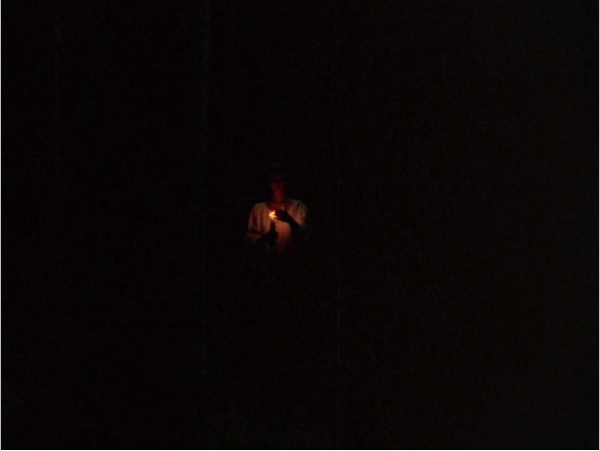
Watching Schalcken the Painter now, I puzzled as to why it is so marginally discussed a film. Perhaps its made-for-TV pedigree condemned it; perhaps the fact that it was only broadcast on the BBC twice, before falling into an inaccessible state where for decades it could only be viewed on bootleg VHS tapes (which surely did no justice to its lush visuals). Maybe it is too slow and its terrors too delicate for most fans of the genre, while far too much a horror film to receive approval from art-house critics. Whatever the reasons, now it can easily be found on DVD and Blu-ray, and I recommend you give it your time. There is not a drop of blood to be found on screen, and there doesn’t need to be – Schalcken the Painter confronts horrors far beyond mere violence.



